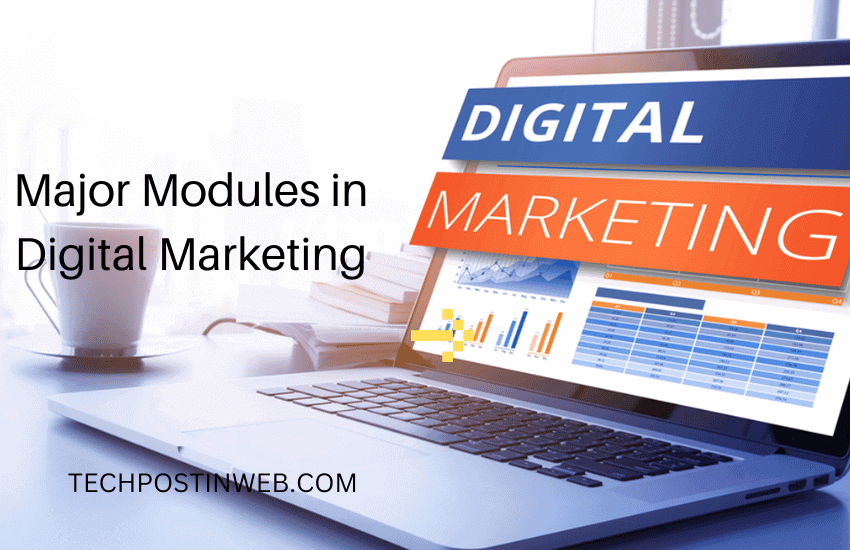The internet and other digital communication channels are changing how brands connect with potential customers. When it comes to digital marketing, companies use channels such as social media, email, and websites to generate leads and establish brand awareness. Though these outlets are technology-based, digital marketing is more about building relationships with customers to drive sales. Technology is important to digital marketing, as it provides you with many useful platforms that facilitate diverse connections.
As an entrepreneur or digital marketer, it is critical to understand the various fundamentals of digital marketing. Having this knowledge allows you to use the tools and opportunities provided by digital marketing to better your consumer-to-business relationships and drive sales.
Here are some of the most fundamental tools of digital marketing:
Table of Contents
Search Engine Optimization (SEO)
Internet users rely on search engines to sift through enormous amounts of data that may be relevant to their interests. As a marketer, a search engine provides an opportunity to convey your brand information – including products and services – to prospective clients. Therefore, understanding how SEO and search engine marketing (SEM) work can optimize your digital marketing efforts and enhance your ability to reach potential consumers.
Search engine optimization refers to the process of increasing a site’s visibility in the search results. Sites that appear within the first page of the search results are more likely to attract attention from existing and potential clients.
The process of generating search results begins with bots that gather information from multiple sites and put it in an index. Then, algorithms are used to analyze the content and determine their order on the search engine results pages (SERPs). The ranking of sites is influenced by multiple factors, including the quality of the content, keywords, site navigability, and more.
Organic search rankings determine the pages that get the most traffic. For instance, the top-ranked position on Google’s SERP has an average click-through rate (CTR) of 28.5%, while the second and third spots have 15.7% and 11.0%, respectively. The CTR sharply decreases from there, with internet users rarely clicking to the second page of search results.
Mozlow’s Hierarchy of SEO Needs illustrates the factors that are considered to increase a website’s organic visibility and rankings. These range from site architecture to content, keywords, user experience, HTML, reputation, and links.
Social Media Marketing (SMM)
In the current digital era, social media has become a powerful communication tool. Most future and existing customers use social platforms to share ideas and opinions relative to their interests and experiences. Through social media engagement, potential consumers are already interacting with their favorite brands and providing feedback to enhance value-creation processes.
Marketing on social media can produce solid relationships between a brand and a consumer that will eventually lead to increased sales. SMM involves using social media platforms such as LinkedIn, Facebook, Twitter, TikTok, Instagram, and Pinterest to create and share content aimed at achieving marketing and branding goals. Connecting and interacting with consumers through social media builds trust, thus converting them into devoted brand ambassadors.
Digital marketers use social media platforms to drive audience engagement by publishing multimedia content in text, video, and image formats. Consider the following questions when developing a social media marketing strategy:
- What are your business goals?
- Who is your target audience?
- Which social media platforms does your audience use, and how do they use them?
- What message do you wish to convey?
- What do you hope to achieve through social media marketing campaigns?
Enhancing Interactions and Communication with Key Target Audiences
Social media platforms promote user-generated content (UGC), which allows individuals to publish their feedback. UGC in social media marketing can range from reviews to opinions and ideas for improvement. Brands can reply to this content, acknowledging the active role of consumers in the production and delivery of quality products and services. In addition, a brand can increase interactivity by starting a conversation through a question or a discussion post. These strategies serve to:
- Increase traffic to your website: Social media allows you to create content and attach links that lead your audience to your business’s website. While creating quality content is essential in digital marketing, promoting it is equally as important.
- Create positive brand associations and brand identity: Social media platforms can be used to show the unique features and attributes of a brand. This marketing strategy allows a business to showcase their product’s specific characteristics and how they meet the consumer’s needs. Given the large number of social media users globally, this information can influence consumer impressions of a brand and strengthen its identity.
Email Marketing
Email marketing is a digital strategy that involves reaching customers and prospects through their inboxes. Despite the rise in social media, email remains a practical communication and marketing tool.
As a digital marketer, you can create an email list to target specific customers and prospects. This feature increases the possibility of positive engagement and sales compared to social media marketing. Its effectiveness is enhanced by adding an email service provider (ESP) to enable audience segmentation, email list organization, and the distribution of marketing content to target audiences.
Here are some tips to optimize your email marketing efforts:
Acquire Recipients’ Permission to Avoid Spam Filters
Before sending emails, it’s essential to show the target consumer an opt-in form to acquire authorization to send the promotional emails. This will ensure that they do not mark your messages as spam.
In addition, avoid using deceptive subject lines to bait-and-switch. Instead, focus on using verified domains to send emails, including a location, and providing an easy opt-out option.
Frequently Update Your List by Removing Inactive Subscribers
Some prospects and customers can lose interest in your brand with time, while others change their email addresses and are lost from mailing lists. These issues reduce audience engagement and can provide inaccurate and misleading data. Removing inactive subscribers ensures that you maintain a fresh list of engaged consumers.
However, it’s advisable to email potentially inactive recipients in an attempt to re-engage them before completely removing these addresses from your list.
Create a Strong Subject Line
Subject lines significantly contribute to email open and click rates. The language should be friendly and conversational while evoking curiosity.
Publish Quality Content
Subscribers opening your email don’t automatically translate to increased traffic or sales. Instead, the quality of the content determines their reaction to the promotional material. When the content is relevant and engaging, these emails will generate anticipation amongst receivers, build loyalty, and strengthen the business-to-consumer relationship. However, if the quality is subpar, the customer will avoid opening your emails, unsubscribe, or flag them as spam. The key is to ensure every email delivers value to consumers.
Utilize Web Analytics and Metrics
Data analytics in digital marketing uses fundamental tools to evaluate and measure performance through tracking and reporting of data and information. Digital marketers understand that the power of online marketing lies in the precise and accurate information collected and analyzed for informed decision-making.
Marketers can use web analytics to collect and examine data on various features such as system performance and user behaviors. Web analytics identify patterns, make connections, and use trends to predict known and unknown outcomes and discover relationships for automated decisions. They also use quantitative measurements, known as metrics, to compare and assess performance. Some common metrics used in web analytics include:
- Total website traffic
- Bounce rate
- Click-through rate (CTR)
- Average time on page
- Exit rate
- Keyword rankings
- Conversion rate
Having knowledge of these fundamental elements of digital marketing is essential to improving business-to-consumer relationships and increasing sales. Developing an understanding of these critical factors allows marketers to implement tools and strategies that drive business. Taking advantage of the opportunities provided by new technologies is a great way to keep your business competitive and consumers engaged in a digital world.


